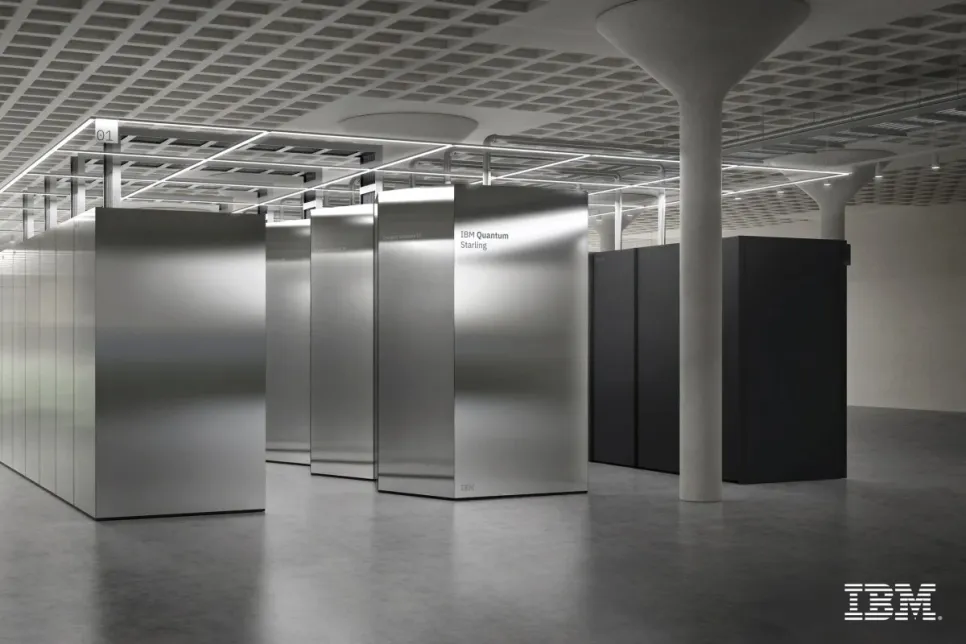Samsung to Use In-House Chip for Its Next Galaxy Series
According to media reports, Samsung decided to use its Exynos 2600 chip across the Galaxy S26 series in selected markets.

IBM unveiled its path to build the world's first large-scale, fault-tolerant quantum computer. It would set the stage for practical and scalable quantum computing.
Delivered by 2029, Quantum Starling will be built in a new Quantum Data Center in Poughkeepsie, New York, and is expected to perform 20,000 times more operations than today's quantum computers. To represent the computational state of an IBM Starling would require the memory of more than a quindecillion (1048) of the world's most powerful supercomputers. With Starling, users will be able to fully explore the complexity of its quantum states, which are beyond the limited properties able to be accessed by current quantum computers.
IBM, which already operates a large, global fleet of quantum computers, is releasing a new Quantum Roadmap that outlines its plans to build out a practical, fault-tolerant quantum computer. "IBM is charting the next frontier in quantum computing," said Arvind Krishna, Chairman and CEO of IBM. "Our expertise across mathematics, physics, and engineering is paving the way for a large-scale, fault-tolerant quantum computer, one that will solve real-world challenges and unlock immense possibilities for business."
A large-scale, fault-tolerant quantum computer with hundreds of thousands of logical qubits could run hundreds of millions to billions of operations, which could accelerate time and cost efficiencies in fields such as drug development, materials discovery, chemistry, and optimization. Starling will be able to access the computational power required for these problems by running 100 million quantum operations using 200 logical qubits. It will be the foundation for IBM Quantum Blue Jay, which will be capable of executing 1 billion quantum operations over 2,000 logical qubits.
Like classical computers, quantum computers need to be error-corrected to run large workloads without faults. To do so, clusters of physical qubits are used to create a smaller number of logical qubits with lower error rates than the underlying physical qubits. Logical qubit error rates are suppressed exponentially with the size of the cluster, enabling them to run greater numbers of operations. Creating increasing numbers of logical qubits capable of executing quantum circuits, with as few physical qubits as possible, is critical to quantum computing at scale. Until today, a clear path to building such a fault-tolerant system without unrealistic engineering overhead has not been published.
The success of executing an efficient fault-tolerant architecture is dependent on the choice of its error-correcting code, and how the system is designed and built to enable this code to scale. Alternative and previous gold-standard, error-correcting codes present fundamental engineering challenges. To scale, they would require an unfeasible number of physical qubits to create enough logical qubits to perform complex operations, necessitating impractical amounts of infrastructure and control electronics. This renders them unlikely to be able to be implemented beyond small-scale experiments and devices.
IBM introduced two new technical papers that detail how it will solve the above criteria to build a large-scale, fault-tolerant architecture. The first paper unveils how such a system will process instructions and run operations effectively with qLDPC codes. This work builds on a groundbreaking approach to error correction featured on the cover of Nature that introduced quantum low-density parity check (qLDPC) codes.
This code drastically reduces the number of physical qubits needed for error correction and cuts required overhead by approximately 90 percent, compared to other leading codes. Additionally, it lays out the resources required to reliably run large-scale quantum programs to prove the efficiency of such an architecture over others. The second paper describes how to efficiently decode the information from the physical qubits and charts a path to identify and correct errors in real time with conventional computing resources.
The new IBM Quantum Roadmap outlines the key technology milestones that will demonstrate and execute the criteria for fault tolerance. Each new processor in the roadmap addresses specific challenges to build quantum computers that are modular, scalable, and error-corrected. Together, these advancements are being designed to culminate in Starling in 2029.